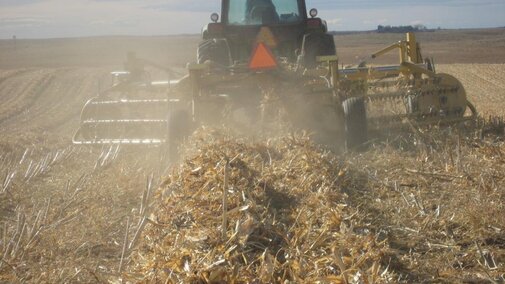Downed corn has been widespread in Nebraska this year, creating harvest challenges to pick up as many ears as possible before the weather turns. Please see Combine Adjustments for Downed Corn and Potential Reasons for Weakened Ear Shanks for more information.
Some growers have asked about additional options besides grazing to pick up downed corn. In the following photo series Bob Klein shares experiences from the growers he worked with under similar circumstances in Keith and Perkins counties in 2012. Please either click on the black arrows within the photos or the dots below the photos to advance to the next photo.

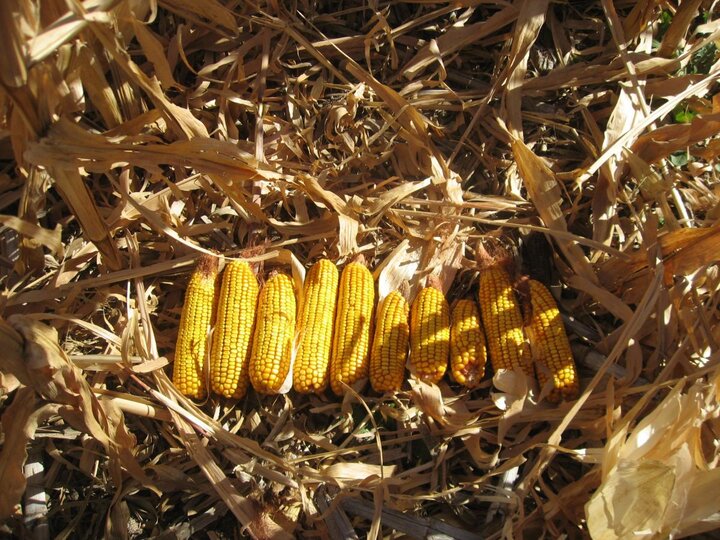
Assessing Loss The number of ears found on the ground in 17.4 feet of row between two rows (equivalent to 1/1000 of an acre). For tables of row lengths equal to 1/1000 of an acre and how to estimate bushels-per-acre loss for each ear found in 1/1000th of an acre, see this 2012 CropWatch article.
-
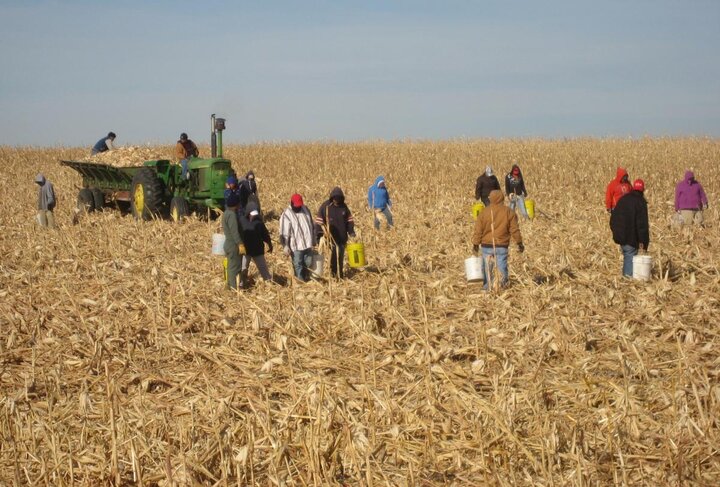
Option 1. Hired Labor
In this option, when corn prices were higher, a crew was hired to pick up the corn. Even then, the grower broke even doing this, but the farmer said it was worth it to remove volunteer corn before it became an issue the following year. This was a field where they grew continuous corn. In this case, the farmer was worried about grazing this field and the potential of founder with the high amounts of downed corn.

Option 2. Raking and Combine Pick-up Attachment Some growers found a Vermeer rake, one of several rakes available, worked well to rake the corn into windrows.
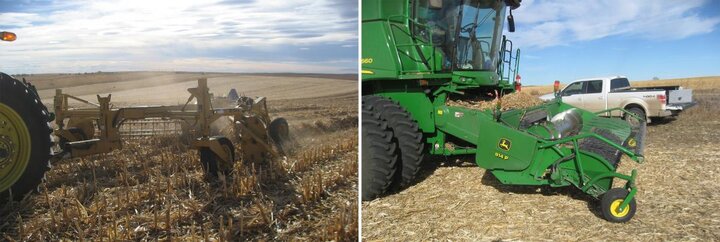
After raking (left) a pick-up attachment was used to pick up the corn. Growers estimated they picked up 75%-80% of what was on the ground via raking and use of the pick-up attachment. One grower who tried to use a flex head for soybeans estimated he got about 50% using the head only without raking first.-
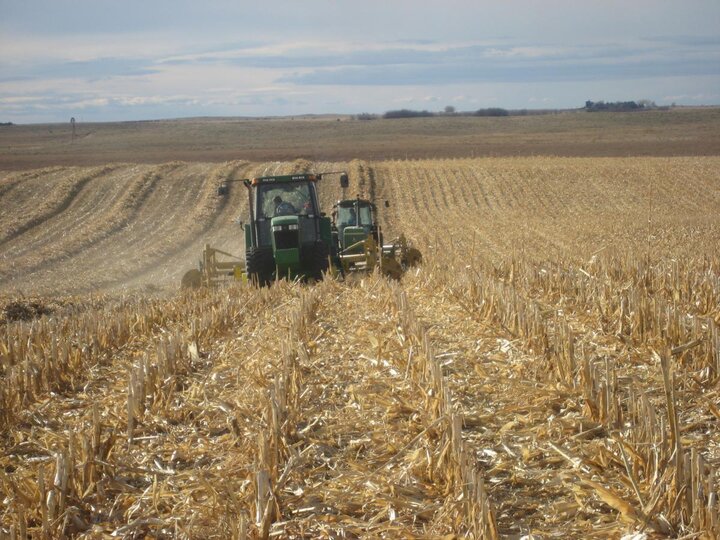
Raking Process in a Field of Downed Corn The following photos show rakes being used in fields of downed corn. Here, two tractors and two rakes are being used in the field. The windrow piles were far enough apart to allow for good combine spread of residue.
-
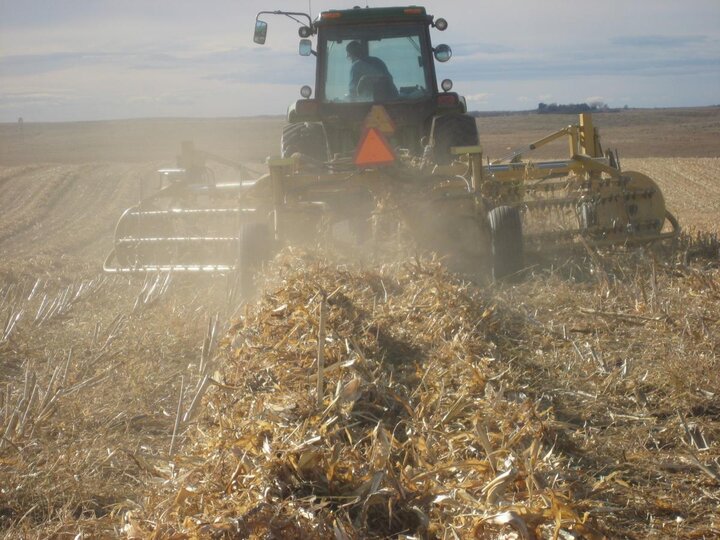
Windrow from the rake. -

Windrow pile (left) versus ground that has been raked. Lots of residue in the pile. 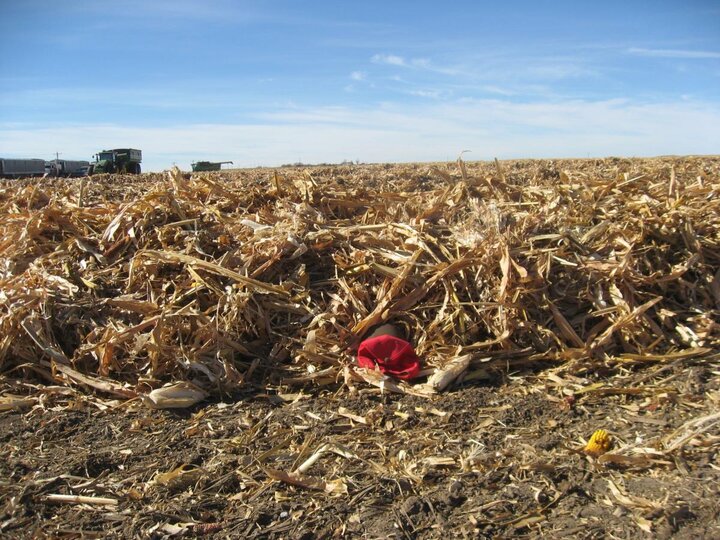
A close-up of the residue in the windrow. All this material will go through the combine.-
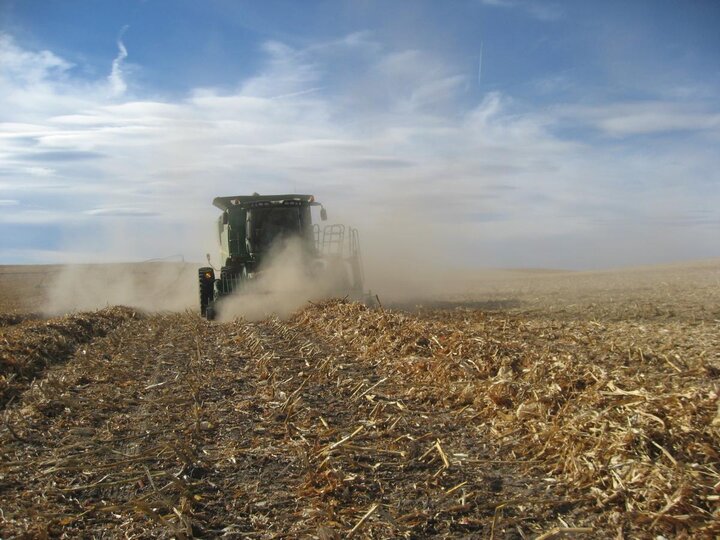
Windrow being picked up by the combine. 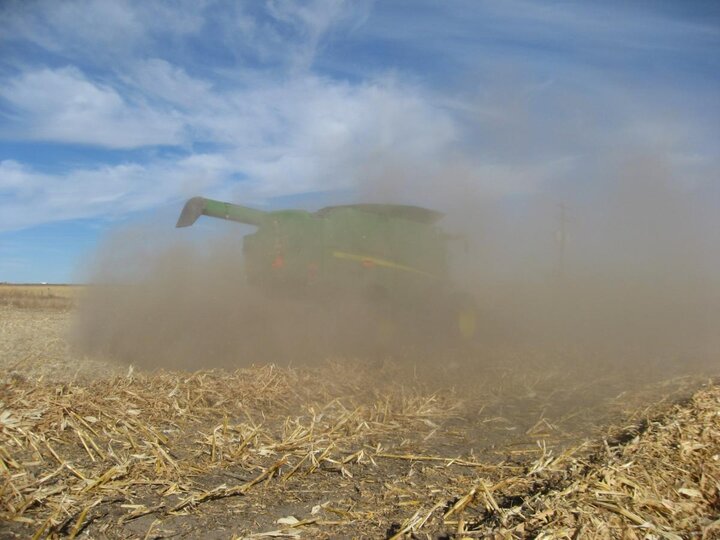
Raking up the corn and dry plant residue results in lots of dust and can be tough on the combine. It also isn't the best idea if the field has lot of rocks. The combine did a pretty good job of spreading the residue; however, the chopped up pieces of residue can be more easily blown by the wind.-

To the left is a windrow ready to harvest. To the right is residue that was in the windrow and went through the combine. The combine did a pretty good job of spreading the residue. It’s important to match the width taken in by the rake with the combine spreader width.
